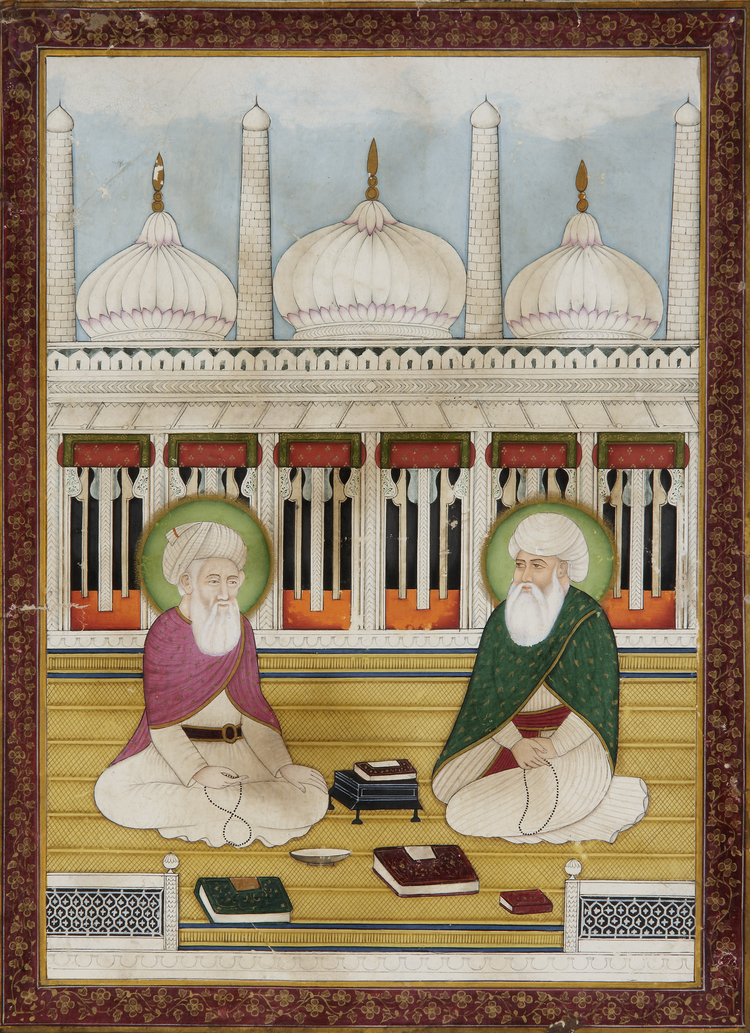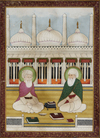SHAYKH ABD AL-QADIR JILANI AND KHAWAJA MU'IN AL-DIN CHISHTI, 19TH CENTURY
Opaque pigments heightened with gold on paper, depicting two seated imams ‘Jilani and Chichti’ in Al-Haram Al-Nabawi in the medina, ruled in gold and red borders.
25 by 18.5 cm.
Abdul Qadir Jilani (1077-1166 AD), the founder of the Qadriyyah Sufi Order, was a native of the Persian province of Gilan. He went to Baghdad to study before spending twenty-five years in Iraq as a recluse. In 1127 he returned to Baghdad, to teach and preach. In 1134 he became principal of a Hanbalite school in Baghdad.
When he first arrived in Baghdad, the other teachers of the city went out to meet him. They presented him with a bowl filled to the brim with water, meaning that there were already enough teachers in Baghdad. He manifested a rose in his hand and placed it on top of the water without spilling any. After this incident, he was known as the ‘Rose of Baghdad’ and the rose became the symbol of the Qadri dervishes. His works include Futuh al-Ghaib (‘Revelations of the Unseen’) and Jala’ al-Khatir (‘The Removal of Care’).
The Order is the most widespread of the Sufi Orders in the Islamic world and can be found in India, Pakistan, Turkey, the Balkans as well as much of East and West Africa.
Muin al-Din or Khwaja Muin al-Din by Muslims of the Indian subcontinent, was a Persian Muslim preacher, ascetic, religious scholar, philosopher, and mystic from Sistan, who eventually ended up settling in the Indian subcontinent in the early 13th-century, where he promulgated the famous Chishtiyya order of Sunni mysticism. This particular tariqa (order) became the dominant Muslim spiritual group in medieval India and many of the most beloved and venerated Indian Sunni saints were Chishti in their affiliation, including Nizamuddin Awliya (d. 1325) and Amir Khusrow (d. 1325). As such, Chishti’s legacy rests primarily on his having been ‘one of the most outstanding figures in the annals of Islamic mysticism’.

